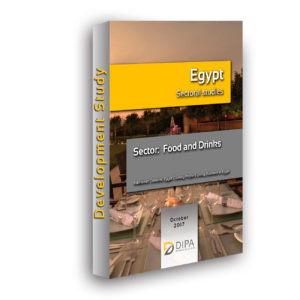 In the wake of the upheaval of recent years, Egypt’s political transition would appear to be complete, with the current parliament largely supportive of the president’s policies. However, security challenges are undermining economic recovery, and the country is underperforming in several key economic sectors, despite overall bright prospects.
In the wake of the upheaval of recent years, Egypt’s political transition would appear to be complete, with the current parliament largely supportive of the president’s policies. However, security challenges are undermining economic recovery, and the country is underperforming in several key economic sectors, despite overall bright prospects.
Egypt is the 29th largest country in the world and the 4th largest country in the Middle East and North Africa. It is the most populous country in the region, with a young population of 88 million, and a relatively high birth rate. The Egyptian system of government reflects a combination of the prime ministerial and presidential systems. The former commander of the armed forces, El-Sisi, currently serves as chief of state.
Egypt’s food and drinks industry is a promising sector. The low-income population segment is quite high, with food dominating consumer budgets. Food consumption is increasing by more than 10% per year and over the long term, the country’s large and youthful population and its developing middle class will offer vast growth opportunities. Price-sensitive food and drink products in particular, are expected to perform well in the coming years, but also more specialised products, e.g. in the healthy eating spectrum. Organic production is expected to take off in the near future with increasing export to the EU.
The business environment in Egypt is restrictive, with the World Bank ranking it 131 out of the 189 countries surveyed in its 2016 Doing Business. While its political and security environment remains uncertain, the relative stability under President El-Sisi is encouraging FDI across key sectors, as economic momentum gradually gathers pace.
The full Development Study deeply analyses the aforementioned as well as several other relevant developments both from a local and a global perspective with the purpose to present the prospects of the Egyptian economy and deliver a set of forward-looking views for businesses and investors.
1. Country Profile
1.1 History of Egypt
1.1.1 Modern Egypt
1.1.2 Post-independence period
1.1.3 Egypt’s Arab Spring
1.2 Geography
1.2.1 Area and Boundaries
1.2.2 Topography
1.2.3 Land Use and Water Resources
1.2.4 Environmental Concerns
1.3 People and Society
1.3.1 Population and National Identity
1.3.2 Demographics
1.3.3 Societal Characteristics
1.4 Government
1.4.1 Framework of Government
1.4.2 Executive Branch
1.4.3 Legislative Branch
1.4.4 Judicial Branch
1.4.5 Political Parties and Leaders
1.5 Main Infrastructure
1.5.1 Transportation
1.5.2 Tele Communications
1.5.3 Energy
1.6 Key Industries and national resources of commercial interest
2. Food and Drinks
2.1 Market characteristics
2.1.1 Food
2.1.2 Drinks
2.1.3 Retail
2.2 Trends and consumer preferences
2.3 Market drivers
2.4 Competitive Landscape
2.4.1 Key Players in Egypt’s Food Sector
2.4.2 Key Players in Egypt’s Drink Sector
2.4.3 Key Players in Egypt’s Grocery Retail Sector;
3. Doing Business
3.1 Starting a Business
3.2 Dealing with Construction Permits
3.3 Getting Electricity
3.4 Registering Property
3.5 Getting Credit
3.6 Protecting Minority Investors
3.7 Paying Taxes
3.8 Trading across Borders
3.9 Enforcing Contracts
3.10 Resolving Insolvency
3.11 Business Environment Indexes
